How sustainable is the Fairphone 2?
By combining modular architecture with spare parts and easy repairs, we designed the Fairphone 2 to last longer than the average smartphone. And logically, a longer-lasting phone should have a lower environmental impact than one that’s replaced every year or two, right? Well, that’s what we hoped, but we wanted to carry out an independent assessment to test our hypothesis.
So to get a better understanding of the implications of our design decisions and what the environmental footprint of our phone really is, we turned to the experts at the Fraunhofer Institute IZM. We commissioned them to complete a life cycle assessment (LCA) of the Fairphone 2 which examines the phone’s environmental impact across its entire life cycle, including production, transport, use and end-of-life phase.
Below we cover some of the highlights of the LCA findings. If you want to jump straight to the findings, read the full Fairphone 2 LCA report.
What’s a life cycle assessment (LCA)?
A life cycle assessment or LCA is a quantitative tool used to assess the environmental performance of a product or service throughout its entire life cycle (often called cradle to grave). In other words, its goal is to pinpoint where environmental impact happens using a wide variety of data, assumptions and (future) scenarios.
Environmental performance is a broad, complex topic, so we began by defining a reasonable scope for our Fairphone 2 LCA study. We decided to focus on the impact categories that are most relevant for consumer electronics: climate change (measured as global warming potential or GWP), abiotic resource depletion (also called abiotic depletion potential or ADP) and human toxicity. And in terms of life cycle stages, we investigated raw material acquisition and manufacturing, use phase, end-of-life (EoL) and transport.
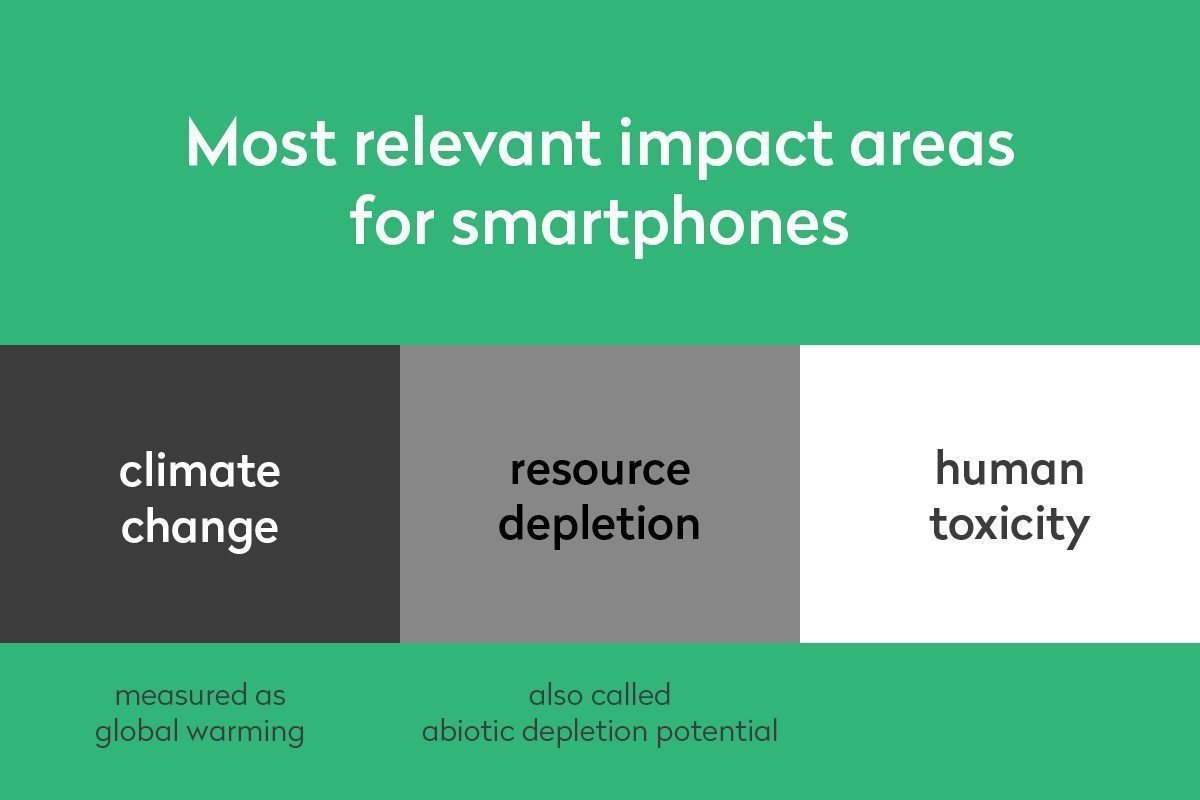
As every LCA is a custom study which is unique to a specific product, the results can be difficult to compare, even across a single category like smartphones and even if we choose boundaries that are similar to existing smartphone LCAs — for example the use of a 3-year lifetime scenario. To account for our aims for longevity, there is a separate 5-year “repair” scenario which we feel better reflects our goals for the phone’s lifespan.
LCA results highlight the value of modularity
Fraunhofer completed the LCA over the course of six months and recently shared their findings with us. So what did we learn about the environmental performance of the Fairphone 2? Here are some of the highlights:
Modularity makes sense: Thanks to the modular design, the study estimates a 30% reduction in global warming potential (GWP) across the entire life cycle of the Fairphone 2 – but only if it really serves as a tool to increase the lifespan of the product. As we suspected, the modular construction (which requires more connectors, a larger PCB area and a plastic sub-housing for each module) does cause an increase in some impact areas. Happily, these are outweighed by the possibilities modularity offers in terms of easy repairs.
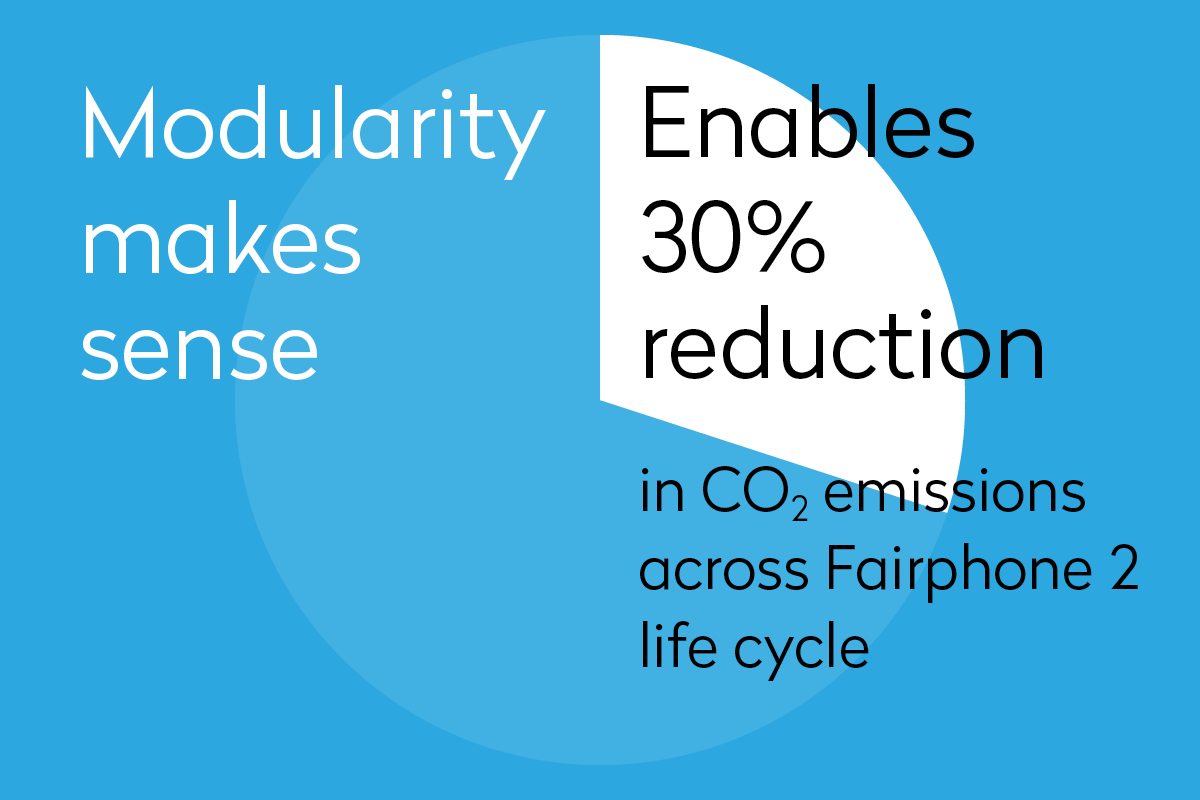
To give a specific example about the advantages of modularity, we have started to perform in-warranty repairs by simply sending the replacement module to customers, instead of sending the whole phone back and forth to our repair center. Currently, this process has a success rate of over 95% (meaning that over 95% of the cases the repair is successful and no further action is required) and saves some CO2 in transportation.
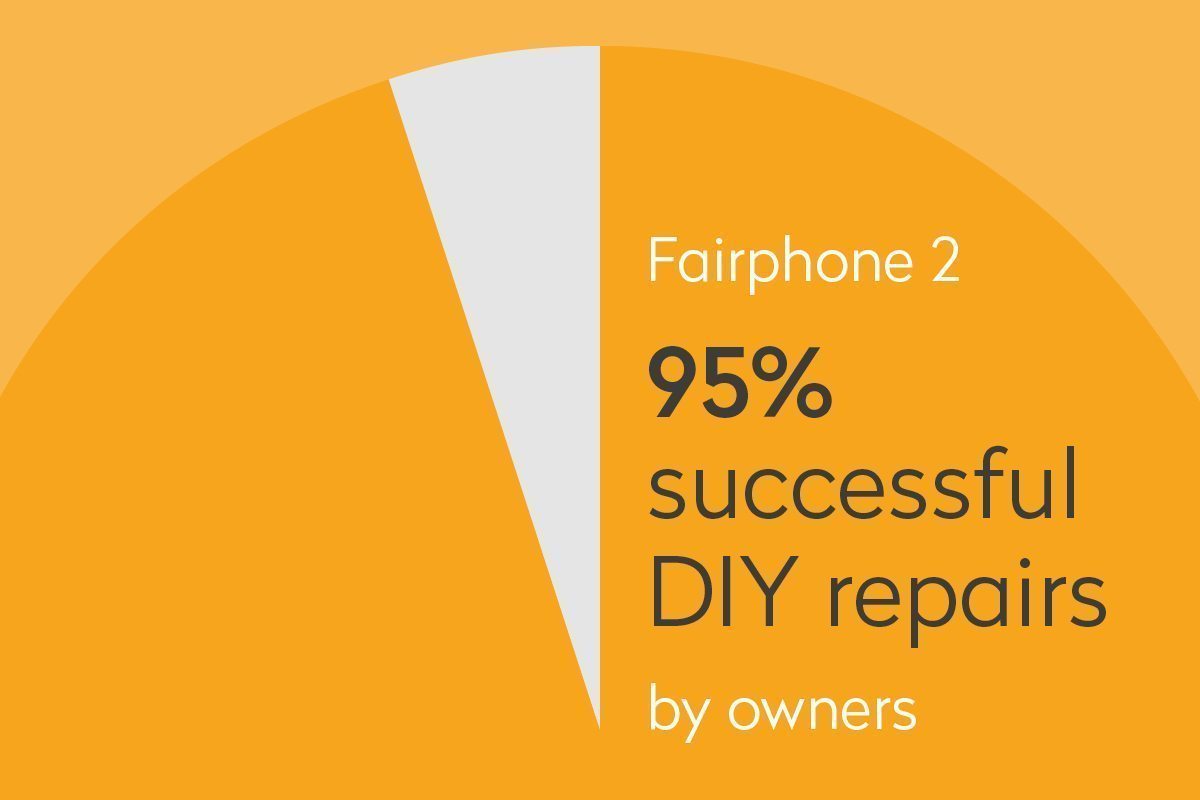
Certain electronic components have high impact: Similar to other consumer electronic products, the primary environmental impact comes from complex components such as the integrated circuits (IC) and printed circuit boards (PCB). The high impact is caused by the amount of energy used in their production – something which we can do very little about.
The study shows that we are already doing a good job at reducing the total area of the PCB panels used by nesting all the PCBs in one panel to minimize use of resources. (Actually, we’d be better off environmentally if we all used “dumb phones”, which contain way fewer ICs… but we know that’s not going to happen!)
Different modules account for different levels in emissions: For example, the core module unsurprisingly accounts for about 60% of the overall impact, while the display only accounts for 7% and the back-cover for 0.3%. So don’t feel too bad if you need to replace your screen or buy one of our new slim cases (coming soon)! (This is part of our strategy to keep what causes the highest impact in your hands and working for as long as possible).
Gold = high impact + high recyclability potential: The amount of gold used in the connectors contributes to a higher abiotic depletion potential (ADP). We can assume that the higher the amount of recycled materials used in the phone, the lower the ADP. However, as there is a lack of specific data it is difficult to estimate by how much. In turn, the high ADP could be balanced by the end-of-life phase – because gold is so valuable, it’s much more likely to increase take-back and drive proper recycling of the Fairphone 2.
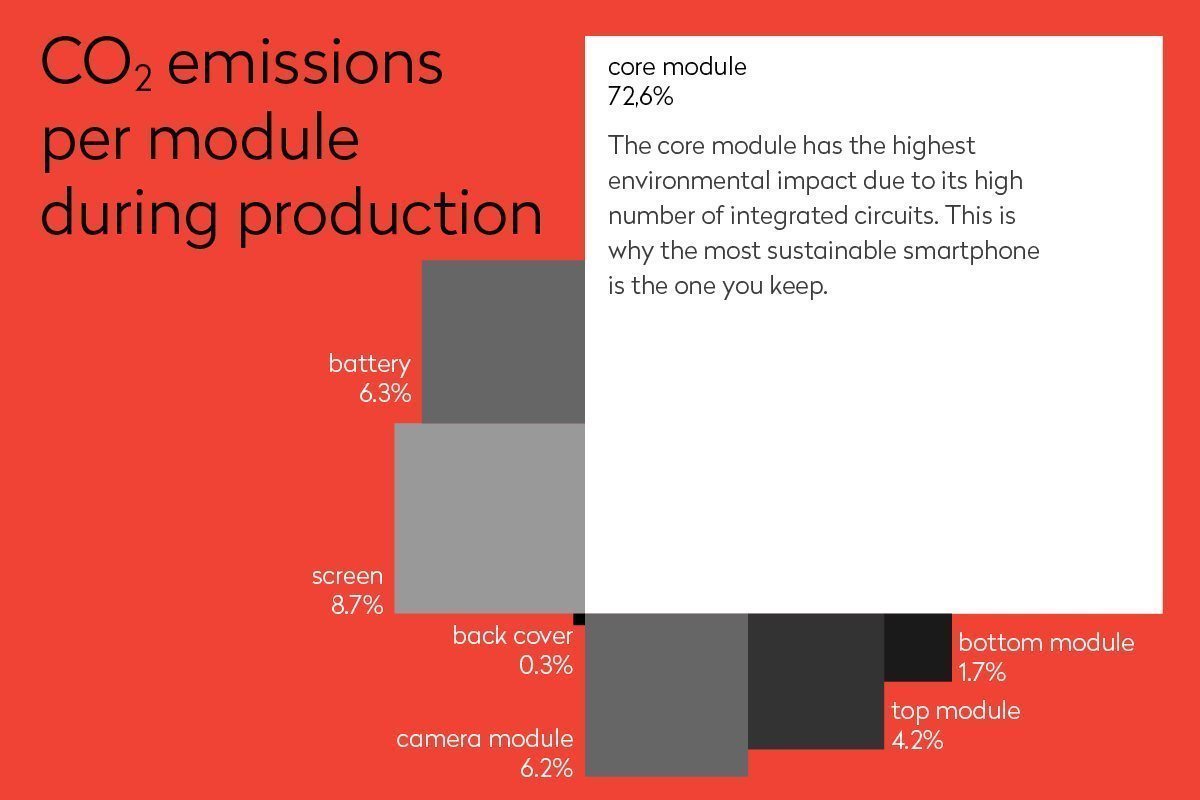
That said, it’s also important to remember that gold mining is fraught with social issues that are not examined in a regular LCA — which is why our current focus is on the improvements in the gold mining sector, as opposed to recycled sources.
Transport has a minimal impact: Looking at the overall life cycle, transport increases global warming potential (GWP) by just 6.8% — most of which is from air freight. The only way to reduce this would be to use rail transport, which is unfortunately too slow, unsafe, and underdeveloped to be a real option at the moment.
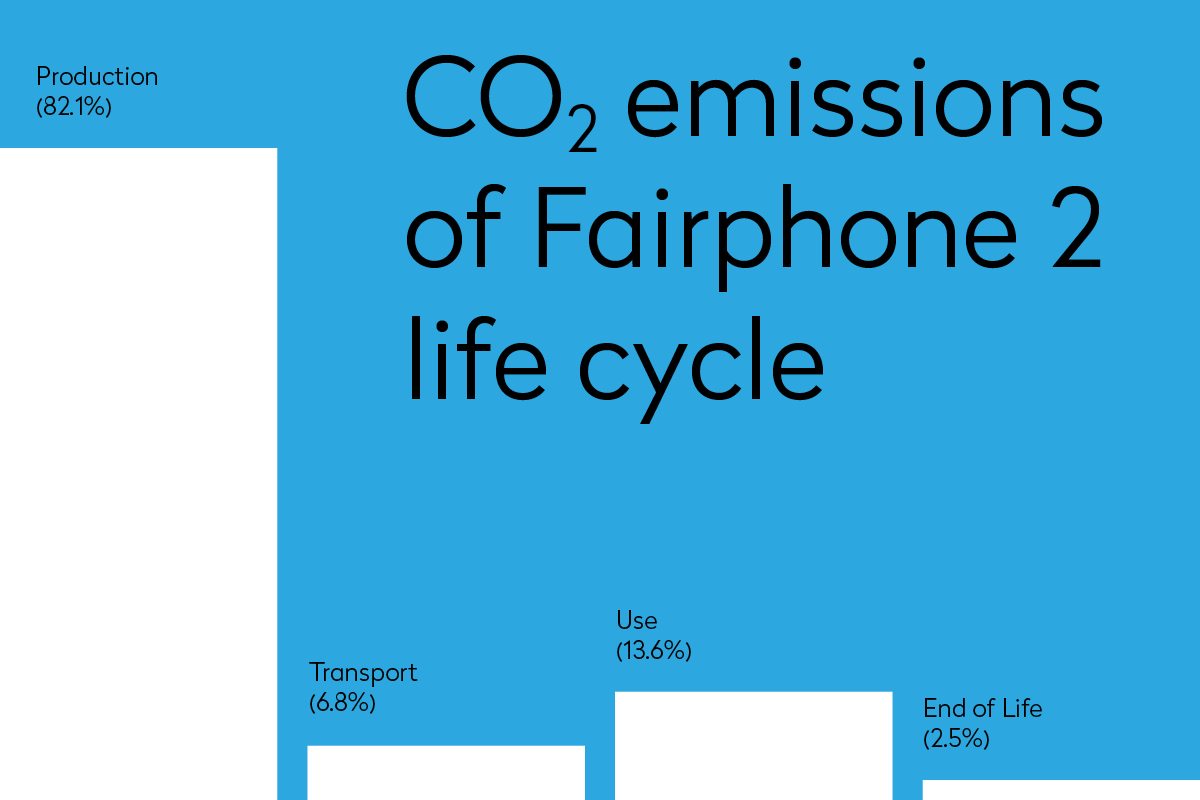
Recycling isn’t a cure-all: While we encourage it wherever possible to improve efficient use of resources, recycling also contributes to increased emissions. The balance of benefits and emissions means recycling has a fairly neutral impact. These findings reflect our current dilemma about how to handle old modules. While take-back and refurbishment best aligns with our values, at the moment recycling locally makes more sense in terms of cost and transport-related emissions. We’ll keep investigating more cost-effective and environmentally friendly options.
You play a major role in the Fairphone 2’s environmental impact
We commissioned this study with the goal of better understanding of what making a modular phone means for the environment. The results of the LCA show that our design choices, especially modularity, easy repairs and affordable spare parts have the potential to significantly contribute to reducing the Fairphone 2’s environmental impact over its entire life cycle.
But as I mentioned at the start of this post, many of the findings of the LCA are based on assumptions and probable future scenarios. The real “proof of concept” and actual impact is largely influenced by you, the user. So what can you do to keep the environmental impact of the Fairphone 2 (and other consumer electronics) to a minimum?
- Keep it. Use your phone (or other devices) as long as possible.
- Repair it yourself! If something breaks, take advantage of the spare parts and easy repairs.
- Delay upgrades. Technology always keeps advancing, but before you buy the latest gadget, carefully consider whether or not you need the fanciest new capabilities.
- Spread the word. The Fairphone 2 is a great storytelling tool – use it to explain to others why longer-lasting devices are so important.
As with everything else we’re pursuing when it comes to fair electronics, the end result is better when we do it together. So we’ll keep doing everything we can to reduce our environmental impact on the production, design and end-of-life phase, including studies like the LCA that will help us make more informed decisions going forward. And we’ll ask you to keep doing your part to limit the environmental impact of consumer electronics, especially during the use phase. Because we can’t make a difference without you!
Note from the editor: Read the full Fairphone 2 LCA report. The LCA study was commissioned by Fairphone to help us gain more clarity into the environmental impact of the Fairphone 2. We would like to thank Marina Proske, Christian Clemm and Nikolai Richter from Fraunhofer Institute IZM for their great work and contributions to our journey towards fair electronics. And an extra special thanks to Karsten Schischke (also from Fraunhofer IZM) for his ongoing support and collaboration.


